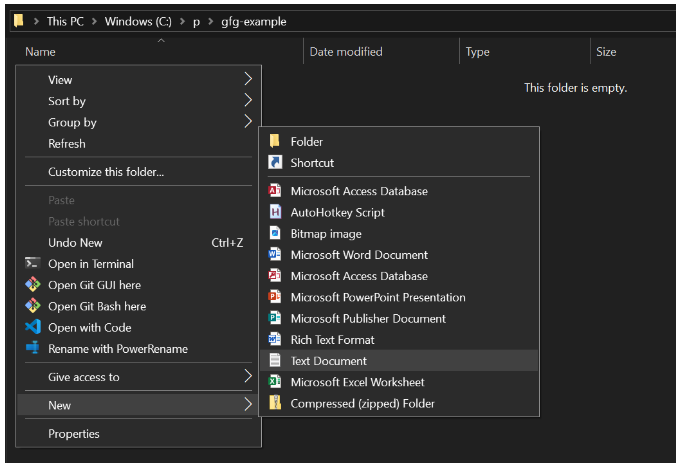
|
|
Docker is an open-source containerization platform. It helps the developers automate the process-related deployment that enables demand-based scaling, and easy management of applications. Dockerfile enables docker to build images and spin containers from those images. In this article, we’ll understand Dockerfile, extensions, syntax, and sample dockerfile. What Is Dockerfile Extension?A Dockerfile is a simple text file that contains instructions for building a Docker image. It’s like a recipe. Each line in the Dockerfile represents a command. When you run the Docker build command, it reads the Dockerfile and generates a Docker image. This image can then be used to launch new containers. Unlike traditional files that have an extension at the end, like report.pdf, draft.docx, and image.jpg. Traditionally, The docker file has no extension. It simply named Dockerfile without any extension type. Additionally, Dockerfiles can be created using the .dockerfile extension. This is used when there is a need to store multiple docker files in one single directory.
Dockerfile with no extension VS file with .dockerfile extensionThere is no difference between a Dockerfile with no extension and a file with a .dockerfile extension. They both serve the same purpose to build Docker images. Using .dockerfile is useful when working with different docker files in the same project. These different docker files could be used for different environments as tests. dockerfile, dev. dockerfile, uat. dockerfile, prod. dockerfile. Creating and Using DockerfileUsing File Explorer and NotepadNavigate to a folder of your choice. Right click and select New > Text Document
Rename the file to Dockerfile and remove the extension. Confirm the prompt
Using Dockerfiles in VS CodeOpening the same folder in VS Code, we can see that our Dockerfile has a docker logo with it.
If we want to create a Dockerfile from VS Code, just open the explorer pane and click on the new file. This file could be named dev.dockerfile.
Additionally, VS Code provides features like syntax highlighting, linting, and IntelliSense to dockerfiles. If the file has a .dockerfile extension or is name Dockerfile, VS Code automatically recognizes it as a Dockerfile and provides these features. Syntax of a DockerfileEach line of the dockerfile is just a command, these comamnds need to follow a certain syntax and pattern. There are a lot of dockerfile commands that can be used to create a docker image. Some of the commonly used commands to write dockerfiles are
Example DockerfileThis is a very simple Dockerfile that can be used to run a python script inside a container.
Dockerfile Extension – FAQsWhy doesn’t Dockerfile have an extension?
Can I give Dockerfile an extension?
Can I have more than one Dockerfile in a project?
How do I use a Dockerfile to build an image?
Can I comment in a Dockerfile?
|
Reffered: https://www.geeksforgeeks.org
| Docker |
Type: | Geek |
Category: | Coding |
Sub Category: | Tutorial |
Uploaded by: | Admin |
Views: | 14 |



